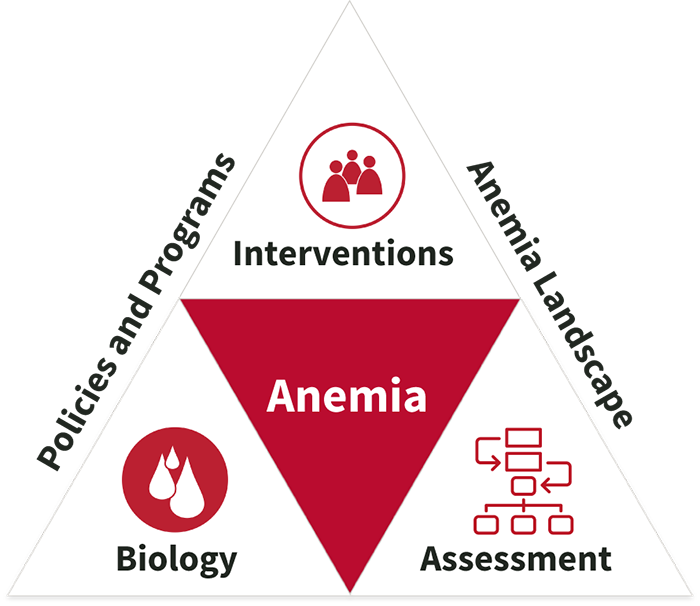The various causes of anemia require diverse and context-specific strategies to strengthen multi-sectoral anemia policy and programming. Policy-makers and program planners have developed population-level policies to reduce anemia to allow for efficient allocation of available resources.
To reach populations in need, translate policies into programs. Practitioners should design these programs designed with an eye for sustainability by incorporating the latest information on cost and cost effectiveness, with the goal of reaching the populations most vulnerable to micronutrient deficiencies and poor health.
We found 62 resource(s)
Eliminating Soil-Transmitted Helminthiases as a Public Health Problem in Children: Progress Report 2001–2010 and Strategic Plan 2011–2020
Technical Report published by World Health Organization in
This WHO report provides an update on the progress made during the first ten years of implementing soil transmitted helminth control programmes, and identifies opportunities and challenges for scaling up control activities.
Pharmaceutical Management for Micronutrients and Anemia-Reduction Medicines
Presentation/Poster published by A2Z: The USAID Micronutrient and Child Blindness Project in
This presentation from the Manoff Group highlights supply chain considerations, from a pharmaceutical perspective, for medicines and supplements aimed at supplying micronutrients and combating anemia.
Success in Delivering Interventions to Reduce Maternal Anemia in Nepal: A Case Study of the Intensification of Maternal and Neonatal Micronutrient Program
Case Study published by A2Z: The USAID Micronutrient and Child Blindness Project in
This case study describes the development of the Iron Intensification Project in Nepal, its design, the implementation process at the district level, the strategy used to scale it up, the data available to describe coverage, and the reduction in maternal anemia in the country between 1998 and 2006. Lessons learned for sustaining and strengthening…
Why Nutritional Iron Deficiency Persists as a Worldwide Problem
Literature Review published by The Journal of Nuturition in
This narrative review highlights the significance of iron deficiency as a worldwide problem. Programmatic and technical obstacles are discussed, and potential solutions for reducing iron deficiency prevalence are offered.
Intermittent Iron and Folic Acid Supplementation in Menstruating Women
Guideline/Guidance published by WHO in
This WHO guideline provides evidence-based recommendations on the intermittent use of iron and folic acid supplements as a public health measure for the purpose of reducing anaemia and improving iron status among menstruating women. The guideline is intended for a wide audience including policy-makers, expert advisers, and technical and programme…
Iron Interventions for Women and Children in Low-Income Countries
Literature Review published by The Journal of Nutrition in
This review highlights how iron interventions might be positioned within four global health initiatives: making pregnancy safer, saving newborn lives, infant and young child feeding, and fortification.
Monitoring Drug Coverage for Preventive Chemotherapy
Guideline/Guidance published by WHO in
This WHO manual provides program managers with standardized guidelines for monitoring and reporting of drug coverage for preventive chemotherapy. It includes definitions as well as tools for collecting, analyzing, and controlling data.
Maternal Iron-Folic Acid Supplementation Programs: Evidence of Impact and Implementation
Literature Review published by Food and Nutrition Bulletin in
This review presents evidence on the impact on maternal mortality of iron–folic acid supplementation from observational studies that were analyzed for the Global Burden of Disease analysis in 2004, summarizes findings from other reviews on this topic, and presents data on anemia reduction from two large-scale national programs as well as factors…



